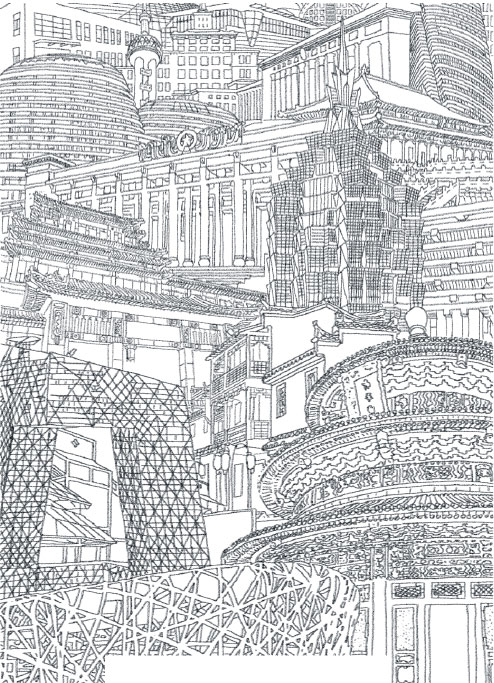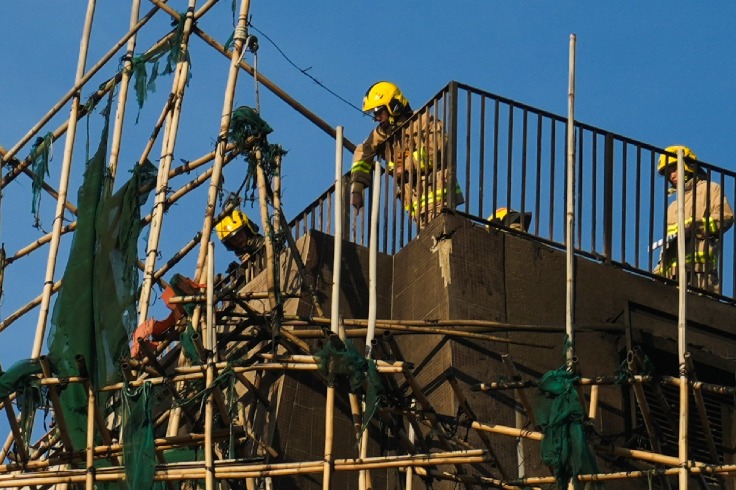Sky-high ambitions


China's global influence in building design and architectural ideals is spreading
In 1949 when the People's Republic of China was founded, the number of people living in urban areas accounted for only about 10 percent of the total population. Today, following years of unprecedented growth, China's urban population has surpassed 831 million, accounting for nearly 60 percent of the total population, according to the national statistics bureau.
Keith Griffiths, the chairman and founder of Aedas, one of the world's largest architectural practices, says that this phenomenal pace of growth has resulted in an increasing pressure for cities to build large-scale mixed commercial buildings to maximize land usage and meet the needs of modern society. One such building is the skyscraper.
China is today home to more than half of the skyscrapers in the world. Of these, 680 are more than 200 meters tall. In addition, 310 skyscrapers have been added in the country since 2015. In contrast, only 33 new skyscrapers were built in the United States during the same period.
One of the best-known examples of skyscrapers in China is without doubt the Shanghai Tower, the nation's tallest and world's second highest building.
Standing in the heart of Lujiazui, Shanghai's financial hub, the 132-story building has 575,000 square meters of space which can accommodate up to 40,000 people. The 114 elevators running inside the building have been arranged like metro lines, heading to different floors and at different speeds.
"What we want to achieve and, ideally, demonstrate to developers and designers of skyscrapers around the world, is how we can make living and working in highly populated cities more efficient, energy-saving and fun through skyscrapers," says Ge Qing, chief engineer and architect of the building.
The first skyscraper in China that is more than 600 meters tall, the Shanghai Tower has a LEED Platinum certification, the highest recognition of the energy and resource efficiency of a building.
"The Shanghai Tower illustrates China's responsibility and commitment to the world to improve the environment and improve the health of its people," says Mahesh Ramanujam, chief operating officer of the US Green Building Council, which issues the LEED ratings.
But it is not just architecture in China that has been drawing the attention of the world. Chinese architects too have been making waves on the global stage.
In 2006, Beijing-based architect Ma Yansong and his colleagues became the first Chinese team in history to win an international open bid for a residential project in Mississauga, Canada. The result was Absolute Towers, a pair of buildings that have been nicknamed the "Marilyn Monroe Towers" by residents because its undulating shape is reminiscent of the skirt of the Hollywood star.
In 2012, Wang Shu, the dean of the School of Architecture at the China Academy of Art in Hangzhou, East China's Zhejiang province, became the first Chinese citizen to win the Pritzker Architecture Prize, the world's top architectural award.
According to the jury, the fact that an architect from China was selected represented "a significant step in acknowledging the role that China will play in the development of architectural ideals". They also pointed out that China's success at urbanization is important to itself and the world.
Lord Peter Palumbo, who was the chairman of the jury, also said: "The question of the proper relation of present to past is particularly timely, for the recent process of urbanization in China invites debate as to whether architecture should be anchored in tradition or should look only toward the future. As with any great architecture, Wang Shu's work is able to transcend that debate, producing an architecture that is timeless, deeply rooted in its context and yet universal."
Wang, who once defined his style as "a combination of ancient aesthetics with modern utility", is widely considered one of the most prominent Chinese architects. His portfolio of projects includes the Ningbo Museum in Zhejiang province, the design of which features a combination of mountains, oceans and elements from traditional residences, and the Xiangshan campus of the China Academy of Art. The campus has roof covers which comprise two million tiles recycled from demolished traditional houses.
Another prolific Chinese architect who has undertaken projects around the world is the late I.M. Pei, whose projects include the Rock and Roll Hall of Fame in Cleveland, Ohio, the Suzhou Museum at his ancestral home in East China's Jiangsu province, and the controversial renovation of the Louvre Museum in Paris in the 1980s. Secretly commissioned by the then French President Francois Mitterrand, the renovation project saw the introduction of a futuristic steel-framed, glass-walled pyramid as a grand entrance for the museum.
Although the new structure was met with criticism, Henri Loyrette, the Louvre's director at the time, described it as a masterpiece and one of the three reasons people would visit the museum.
Pei, who was also a recipient of the prestigious Pritzker Architecture Prize, died in May this year at the age of 102. Nearly everyone who paid tribute to the architect described him as one of the greatest modernist architects in history.
- China's top political advisor meets delegation of A Just Russia party
- Pooled efforts expected to deepen reforms in Hong Kong with new legislature elected
- Nanfeng mandarins of Jiangxi are going global
- Former senior official of Guangxi expelled from Party
- Former CPPCC official Bi Jingquan dismissed from office
- Man detained for allegedly hugging unfamiliar girl in Guangdong park



































